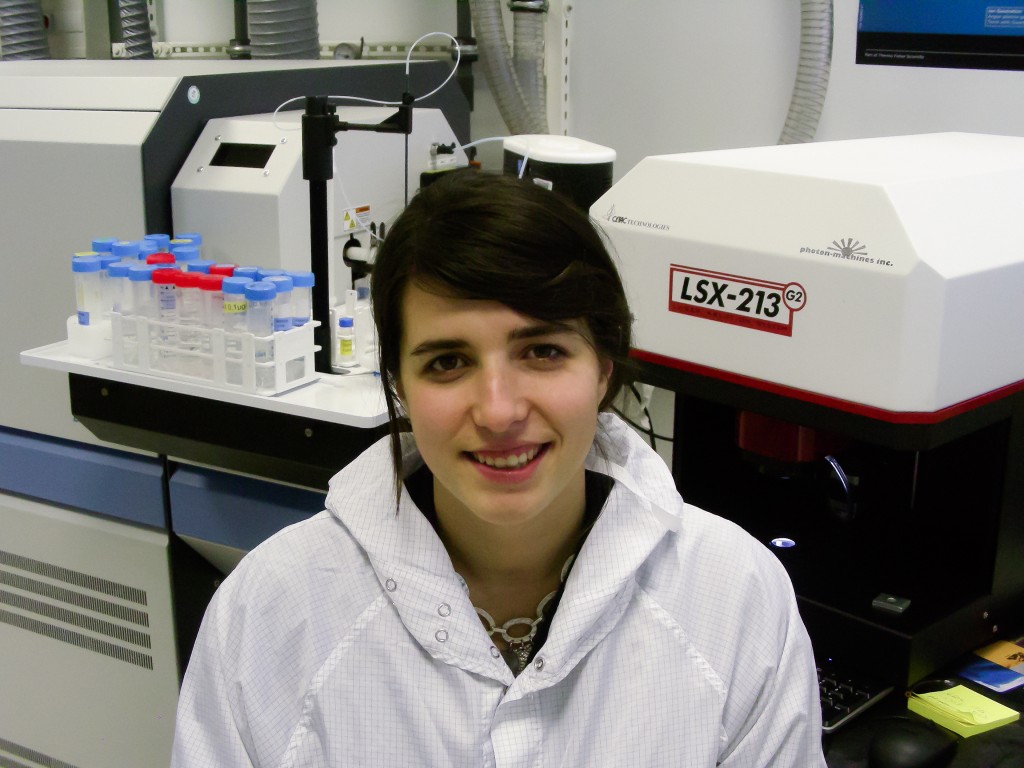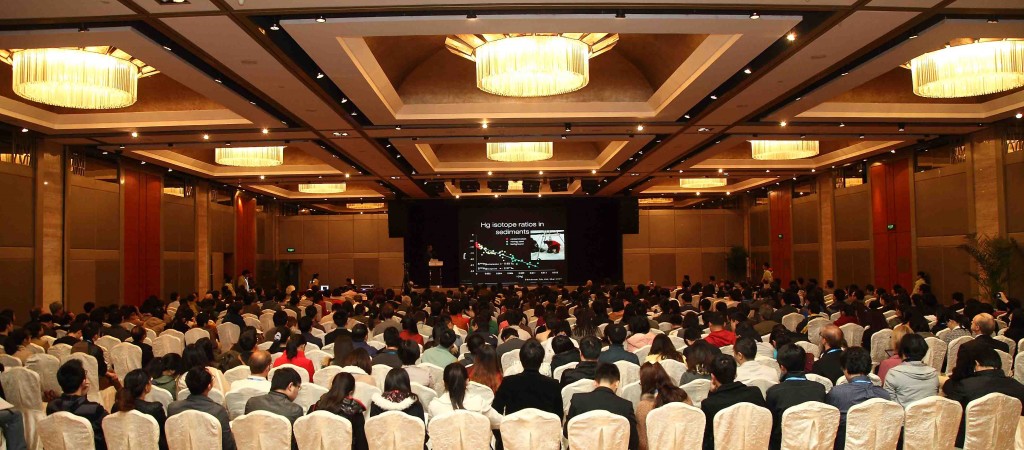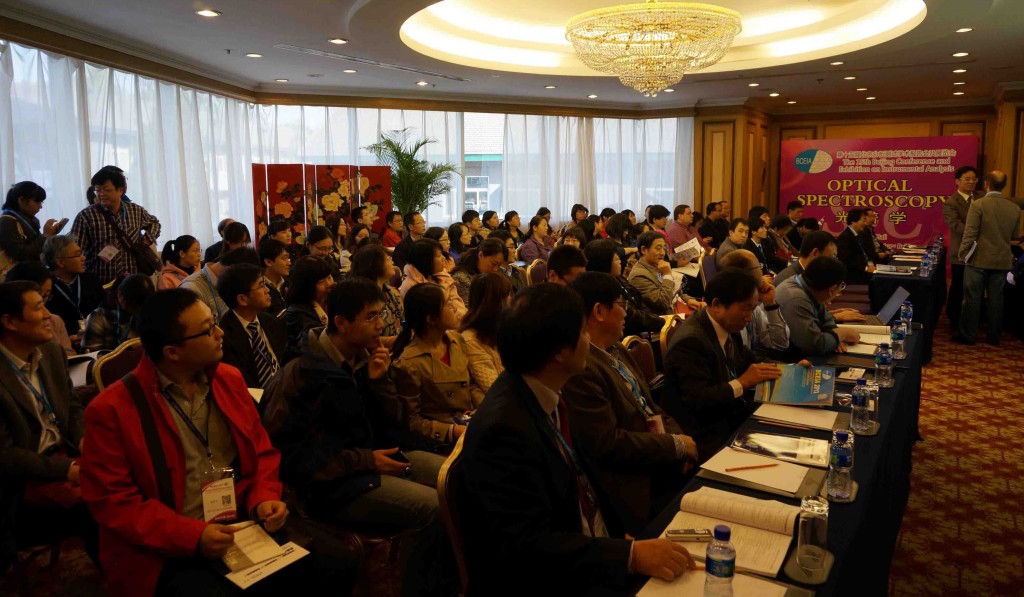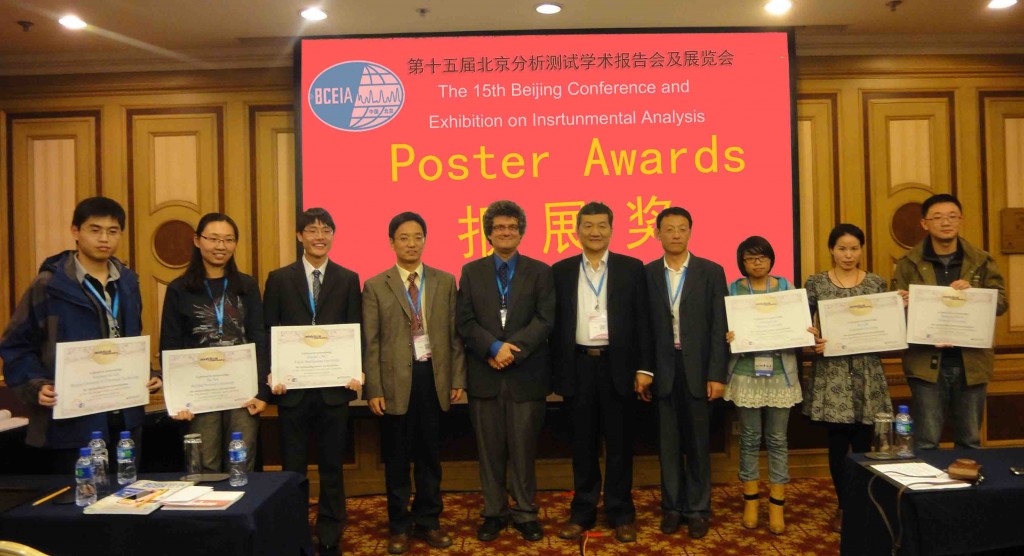Today, we interview Ariane Donard, a PhD student who carries out her research at the University of pau and pays de l’adour and at the French Nuclear Energy Agency (CEA), under the supervision of Dr. Christophe Peycheran and Dr. Fabien Pointurier.
Who or what inspired you to become a scientist?
I always liked science class as a student and believe that being a scientist would fit my personality well because I think it requires curiosity, patience and pugnacity. There is also no doubt that my father had a great influence on my desire to become a scientist. My father is an analytical and environmental chemist specialized in speciation. He is very passionate about his job and very enthusiastic when he talks about it. I have caught the research bug!
Why did you choose your research group/University and what factors influenced your choice?
After graduating, I worked as an engineer for a year realizing then that I wasn’t completely satisfied with my job. I thought research would fit me better so I started to look for a PhD program. I spent a year in Sweden as a student where I got the chance to work on the coupling of laser ablation and ICP MS and started to appreciate the potential of this technique. So, when I heard Christophe Pecheyran had a PhD position on this subject in collaboration with Fabien Pointurier from the CEA (French nuclear energy agency), I jumped on the opportunity. Another reason that made me choose this PhD program is the availability of great analytical equipment in those laboratories.
Can you explain a bit the purpose of you current research activities?
I work for the French nuclear energy agency. I try to develop methodologies to use LA-ICP-MS for different applications of interest to the agency. I am currently working on a challenging particle analysis dealing with an extremely low quantity of analyte, which produces a very short signal. Another part of my research is to study “laser-material interaction” by evaluating the influence of very high frequency (up to 100 000 Hz) with different wavelengths on ablation. For this, I use a prototype femtoseconde laser being developed in collaboration between my team and NEXEYA, a French company when I work in Pau. I also spend some time of the year in the CEA laboratory, close to Paris where I use a nanosecond laser UV.
How is a typical day in your lab?
When I conduct experiment, I start by turning on the instruments and checking that there is no problem before going to our laser group “kick off of the day” coffee meeting. We are a small group of two postdoc, our chief and me. This morning meeting is a very important moment of day in the lab because we talk about what we will be doing or discuss problems we may have encountered. The rest of the day is typically divided between running experiments and computer work.
What common activities are organized in your research group?
What I really like in our laboratory’s activity is the lunch seminar every other Friday. A person of the lab: a professor, an assistant, a post doc, or a PhD presents one of his research topic for 45 min. It is really interesting because it gives us an insight on all the areas of on-going research in the laboratory. The presentation is followed by a discussion that is always very constructive because people specialized in other fields can give us other perspectives on our own work. After that we all share lunch which is a great opportunity to get to know our coworkers and really help foster a nice atmosphere in the lab.
What are your views on JAAS? Which type of articles do you prefer? Do you miss some content?
JAAS has been one of the reference journals for my bibliography since the beginning of my PhD. I follow actively papers on LA-ICP-MS but also on particle analysis in general. I like the “technical notes” articles that are very useful when you start an experiment and can help you to develop the method.
How do you search for scientific information? How do you manage your bibliography?
At the beginning of the PhD, I did extensive research on laser ablation publication. I mostly use general database like web of knowledge, Scopus. I also check all the reviews in my field and verify that all the journals cited are accessible from the databases I use. I set-up different alerts with key words and also names of famous authors in my field to be up to date on the latest on laser ablation mass spectrometry field.
What app/programs do you typically use?
To write documents, presentation or compiling data I use Microsoft Office pack. I manage my bibliography with Mendeley, it’s really convenient to access to all your files from any computer.
What do you like and dislike the most about your work?
As I said before my experience as an engineer really helps me to see the bright side of the PhD. It’s really nice to have the chance to develop our own subject, to be focused on just one goal. I feel really lucky to work surrounded by experienced persons and to have access to such powerful instruments. I like the fact that we are challenged all the time. Once you find an answer on a subject a new one is always popping up. The part I dislike the most is when the instruments are unstable and you could spend a whole day to get them to work properly.
Where do you see yourself in five years?
In five years, I would hope to be back in France after some postdoc abroad. I would love to work for a few years in a foreign lab. It’s very enriching to discover different methods of work, different cultures. I would like to continue in the research field possibly the public sector but I don’t rule out the industrial sector at this point. Working for example in an analytical laboratory at developing new analytical methods could be a nice job.
What do you enjoy doing when you are not in the lab?
I like my job but I also like my life outside the lab! I have a lot of activities when I’m not at work. I take dance and guitar classes and I’m playing in a band. I think it’s important to take your mind off the work to be even more concentrated during the day. Of course during a PhD, there are very busy periods when you have to put aside your activities for a while and stay focus on your work but I always try to find a balance.
Many thanks for sharing your views with us, Ariane, and be careful with the research bug!












 Beijing and its exhibition at Beijing Exhibition Center.
Beijing and its exhibition at Beijing Exhibition Center.
